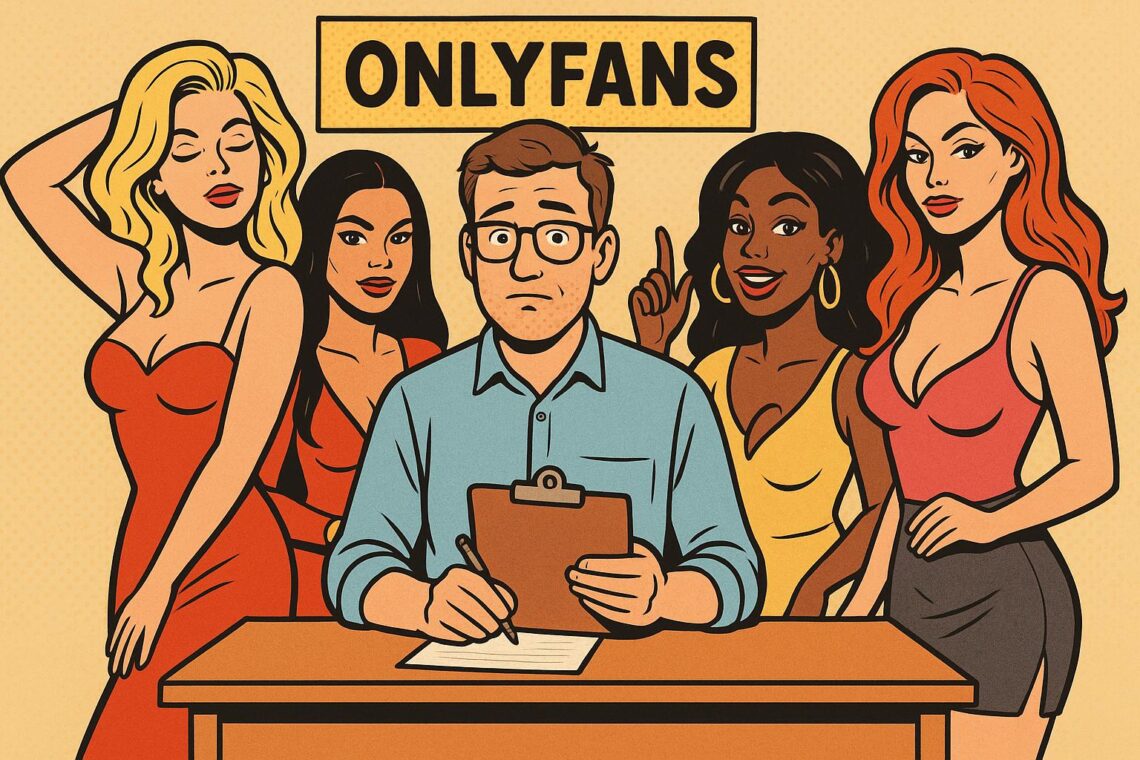The creator economy continues to evolve at a breakneck pace, driven by platforms like OnlyFans, Fansly, and Patreon. In this dynamic landscape, model marketplaces initially emerged as revolutionary tools to help agency owners bypass the often frustrating task of recruiting creators. However, despite their early promise and success, these marketplaces appear to have stagnated in their development. This article explores the current flaws in model marketplaces, dissects the underlying issues in agency-model dynamics, and presents actionable solutions for improving this critical ecosystem.
Introduction: A Game-Changing Innovation That Stalled Over Time
When model marketplaces first appeared in 2022, they completely transformed the OnlyFans management (OFM) industry. For digital marketing agencies and creator managers, these platforms provided a streamlined way to connect with aspiring creators. By offering curated lists of models – complete with stats like age, location, and available working hours – marketplaces removed one of the most significant barriers to entry: finding reliable talent.
However, three years later, the industry has changed drastically. Social media platforms have tightened restrictions, competition among creators has skyrocketed, and organic marketing has become the lifeblood of success. Meanwhile, model marketplaces have remained fundamentally unchanged since their inception. This lack of evolution has exposed critical flaws in the system that hinder both agencies and creators from achieving their full potential.
The Foundation of Model Marketplaces
Model marketplaces are essentially digital catalogs where agency owners purchase access to creators. Marketplaces supply essential details about each model, such as her availability, location, and willingness to create certain types of content. However, once the transaction is complete, the responsibility for onboarding and managing the model falls entirely on the agency. While this system worked well in the past, it now struggles to meet the demands of a more sophisticated and competitive industry.
Key Challenges Facing Model Marketplaces Today
1. A Lack of Evolution in Consumer Experience
The fundamental process of buying models from a marketplace has remained unchanged since late 2022. From browsing listings to arranging contracts, agency owners must navigate outdated workflows that fail to address modern challenges. This rigidity is particularly frustrating given how much the broader creator economy has evolved.
Platforms like TikTok and Instagram now dominate creator marketing, requiring daily, high-quality content output. Yet marketplaces make no effort to clarify a model’s ability – or willingness – to meet these expectations. Instead, they leave agency owners guessing about whether a model’s stated "4-6 hours of availability" translates into actual productivity.
2. Oversupply of Low-Quality Models
The market is saturated with creators who look promising on paper but lack the discipline, skills, or motivation to succeed. This overabundance of "low-quality" talent dilutes the value of marketplaces and wastes the time and resources of agency owners. Many models appear unaware of what the role entails, leading to frequent dropouts or underperformance after onboarding.
A major contributing factor is that recruiters prioritize volume over vetting. Models are onboarded without being educated about their responsibilities or the work required to succeed in OnlyFans management. As a result, agencies often encounter a high level of flakiness and disengagement, despite investing significant effort into training and marketing.
3. Cultural Barriers and Misaligned Expectations
Cultural differences and language barriers exacerbate the challenges of working with international talent. For example, South American models dominate many marketplaces, yet their work ethic and communication style often clash with the expectations of Western agencies. Misaligned expectations about workload and productivity further complicate these partnerships, leaving both the model and agency dissatisfied.
The Systemic Design Flaw: Undefined Roles and Expectations
The heart of the problem lies in how marketplaces operate. Models are advertised to agencies without any clear definition of their role or the expectations they will face. This creates a disconnect between what agencies need and what models are prepared to deliver.
For example, many models list availability as "4-5 hours per day" without understanding that this time might involve producing dozens of TikToks, Reels, or other content. The absence of a defined job description or production quota leaves agency owners to break this news to models after payment, often resulting in frustration and contract termination.
Additionally, marketplaces make no effort to screen for or train models to meet industry standards. By focusing solely on the transactional aspect – matching agencies to creators – they ignore the critical need for preparation and alignment. This failure not only hurts agencies but also damages the models’ chances of long-term success.
Proposed Solutions: Evolving Model Marketplaces for 2025 and Beyond
To address these challenges, model marketplaces must embrace innovation and restructure their approach. The following solutions could help marketplaces regain relevance and provide real value to both agencies and creators.
1. Pre-Qualification of Models
Marketplaces should implement a vetting process to ensure models meet a baseline level of commitment and capability. This could include:
- Clear Job Descriptions: Models must understand the daily tasks they will be expected to perform, such as creating high volumes of social media content.
- Workload Simulations: Before being listed, models could complete a trial period or simulation to demonstrate their ability to meet content production requirements.
- Soft Skills Assessment: Evaluate traits like communication, responsiveness, and adaptability to ensure models are equipped to handle the demands of the job.
2. Model Training Programs
Providing educational resources for models could bridge the knowledge gap and set them up for success. These programs could cover:
- Basics of content creation, including lighting, framing, and platform-specific algorithms.
- The importance of consistency and how daily effort translates into revenue growth.
- Expectations around communication and collaboration with agency partners.
3. Curated Marketplaces with Higher Standards
Instead of prioritizing quantity, marketplaces should focus on quality. By offering a smaller, curated selection of pre-qualified, highly motivated models, they can charge premium prices and attract serious buyers. Agencies would gladly pay more for creators who are well-prepared and reliable.
4. Performance-Based Warranties
Current warranty systems are often restrictive and fail to protect buyers adequately. Updating warranties to include performance metrics (e.g., content quotas or engagement expectations) would incentivize models to deliver on their commitments and provide more security for agencies.
5. Improved Communication Channels
Streamlining communication between models, marketplaces, and agencies could prevent misunderstandings. Features like integrated chat systems, progress tracking, and periodic check-ins could ensure alignment and accountability throughout the partnership.
The Future of Model Marketplaces: From Volume to Value
The creator economy is too competitive to rely on outdated systems. Agencies need reliable, motivated talent to scale their operations and meet the demands of platforms like TikTok and Instagram. Marketplaces that recognize this shift and adapt their offerings will not only survive but thrive.
The first marketplace to pivot from selling high-volume "fantasy" leads to providing high-quality, income-generating assets will redefine the industry. Reliability, preparation, and alignment will become the new currency of success in OnlyFans management, and marketplaces that deliver these qualities will dominate the market.
Key Takeaways
- Model marketplaces revolutionized OnlyFans management in 2022 but have stagnated in their evolution, leading to inefficiencies and unmet needs.
- A major flaw is the lack of clear job descriptions and expectations for models, which creates misalignment between agencies and creators.
- Oversaturation of low-quality talent dilutes the value of marketplaces, wasting time and resources for agencies.
- Cultural and communication barriers, particularly with South American models, exacerbate challenges in the recruitment process.
- Agencies now rely heavily on organic marketing through platforms like TikTok and Instagram, making consistent content output a non-negotiable requirement for models.
- Marketplaces should implement pre-qualification processes, training programs, and curated selections to improve buyer satisfaction and model success rates.
- The introduction of performance-based warranties and enhanced communication channels would provide more security and transparency for all parties involved.
- The future of successful marketplaces lies in shifting from volume-based selling to delivering income-generating, reliable talent.
Conclusion: A Call for Innovation
Model marketplaces have the potential to once again transform the creator economy, but only if they evolve to meet the changing needs of agencies and creators. By focusing on preparation, alignment, and quality, these platforms can deliver real value and secure their place as essential tools in OnlyFans management. Agencies are ready to pay a premium for reliability – now it’s up to marketplaces to deliver.
Source: "The problem with model marketplaces" – Yalla Papi, YouTube, Oct 16, 2025 – https://www.youtube.com/watch?v=aXHpVneyXt4





